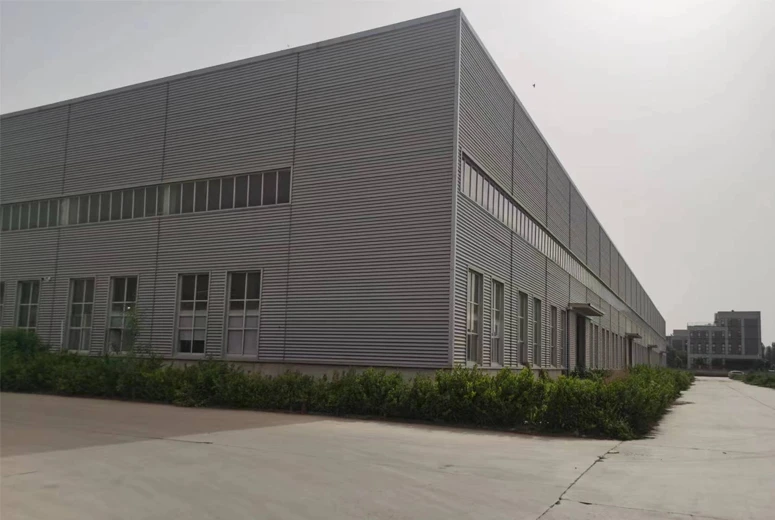Hydraulic System for Straightening Rebar Efficiently and Effectively
Hydraulic Rebar Straightener Revolutionizing Construction Projects
In the construction industry, efficiency and precision are paramount. One area where these qualities are particularly crucial is in the processing of reinforcement bars, or rebar, which are essential for structural integrity in concrete constructions. Traditionally, the process of straightening rebar has been labor-intensive, often requiring significant manual effort and time. However, advancements in technology have led to the development of hydraulic rebar straighteners, which are transforming the way rebar is prepared for use in construction projects.
What is a Hydraulic Rebar Straightener?
A hydraulic rebar straightener is a machine that utilizes hydraulic power to straighten bent and coiled rebar quickly and efficiently. The principle behind hydraulic systems involves the use of incompressible fluids to transmit force, which enables the machine to exert considerable force to reshape the rebar without compromising its structural properties. This technology not only streamlines the process but also improves the accuracy and consistency of rebar processing.
Advantages of Using Hydraulic Rebar Straighteners
1. Increased Efficiency One of the most significant benefits of hydraulic rebar straighteners is their ability to process rebar much faster than manual methods. These machines can straighten multiple lengths of rebar simultaneously, drastically reducing the time required to prepare materials for construction.
2. Precision and Quality The hydraulic system provides consistent pressure, ensuring that each piece of rebar is straightened to uniform specifications. This level of precision is crucial for maintaining structural integrity in concrete elements, as uneven reinforcement can lead to weaknesses in the final structure.
3. Labor Savings By automating the straightening process, hydraulic rebar straighteners reduce the need for extensive labor. Fewer workers are required on-site, allowing skilled labor to focus on more critical tasks within the construction phase. This not only lowers labor costs but also enhances safety by minimizing manual handling of heavy materials.
hydraulic rebar straightener

4. Versatility Hydraulic rebar straighteners can accommodate various sizes and types of rebar, making them adaptable to different construction projects. Whether the project requires small diameter bars or larger ones, these machines can adjust accordingly, providing greater flexibility in material handling.
5. Reduced Waste When rebar is straightened manually, there is always a risk of damaging the material, leading to wastage. Hydraulic straighteners minimize this risk through controlled processing, ensuring that structural materials are used efficiently and economically.
Application in the Construction Industry
The use of hydraulic rebar straighteners spans a wide range of construction applications, from residential buildings to large-scale infrastructure projects. In situations where rebar is required in bulk, such as the construction of bridges, highways, and high-rise buildings, the efficiency of hydraulic straightening becomes even more critical. Additionally, as construction schedules tighten, the ability to prepare materials rapidly without sacrificing quality becomes a significant competitive advantage.
Technological Innovations
The design of hydraulic rebar straighteners is continually evolving, driven by advancements in technology. Modern machines often incorporate digital controls that allow operators to program specific settings for different types and sizes of rebar. Some machines feature automated feeding systems that minimize manual intervention, further improving efficiency. Furthermore, the integration of sensor technology enables real-time monitoring of the straightening process, ensuring that any deviations in quality can be addressed immediately.
Conclusion
In conclusion, hydraulic rebar straighteners represent a significant advancement in the construction industry, enhancing efficiency, precision, and safety in the processing of reinforcement materials. As construction demands continue to grow and evolve, the role of such technological innovations will only become more critical. The adoption of hydraulic straightening technology not only leads to smoother operations and lower costs but also contributes to the overall quality and longevity of constructed structures. As the industry moves forward, hydraulic rebar straighteners will undoubtedly play an essential role in meeting the challenges of modern construction.
-
High Frequency Straight Seam Welded Pipe Production Line-BzZhou Xinghua Machinery Equipment Manufacturing Co., LTD.|Precision Welding, High EfficiencyNewsJul.30,2025
-
High Frequency Straight Seam Welded Pipe Production Line|BzZhou Xinghua|Precision Welding&EfficiencyNewsJul.30,2025
-
High Frequency Straight Seam Welded Pipe Production Line - BzZhou Xinghua|Precision Engineering&EfficiencyNewsJul.30,2025
-
High-Frequency Straight Seam Welded Pipe Production Line-BzZhou Xinghua Machinery Equipment Manufacturing Co., LTD.NewsJul.30,2025
-
High-Frequency Straight Seam Welded Pipe Production Line-BzZhou Xinghua Machinery Equipment Manufacturing Co., LTD.|Precision Manufacturing, High EfficiencyNewsJul.30,2025
-
High Frequency Straight Seam Welded Pipe Production Line-BzZhou Xinghua Machinery Equipment Manufacturing Co., LTD.|Precision Steel Pipe Manufacturing&Industrial EfficiencyNewsJul.29,2025


